Is conversational messaging shaping the future of marketing?
Salesforce predicts that by 2025, 95% of customer interactions will happen through AI. What’s more, 71% of customers want brands to connect with them via conversational messaging—a marketing tactic that’s impossible to scale without the help of AI.
Updated on 26 Sep 2025
Conversational messaging is now a key part of the customer experience for modern shoppers. For brands, it helps make interactions with customers more personal and meaningful. For customers, it opens another channel to connect with their favorite brands in a similar way to chatting with friends and family.
In this guide, we’ll discuss how to leverage conversational AI messaging on WhatsApp. You’ll learn step-by-step how to implement conversational messaging into your marketing strategy.
What is conversational messaging?
Conversational messaging is a powerful tool that allows businesses to engage in real-time dialogues with customers on messaging platforms such as WhatsApp and SMS, unlike traditional forms of communication like email.
Conversational messaging enables two-way conversations powered by generative AI, where customers can interact with businesses directly from their devices.
For example, a retail business can use conversational messaging on WhatsApp to help customers browse and purchase products. In that conversation, brands can offer options such as “Browse Products,” “View Trending Items,” or “Get Assistance.” Based on the customer’s selection, the conversation can progress accordingly, providing product recommendations and promotions or connecting them with a customer service representative.
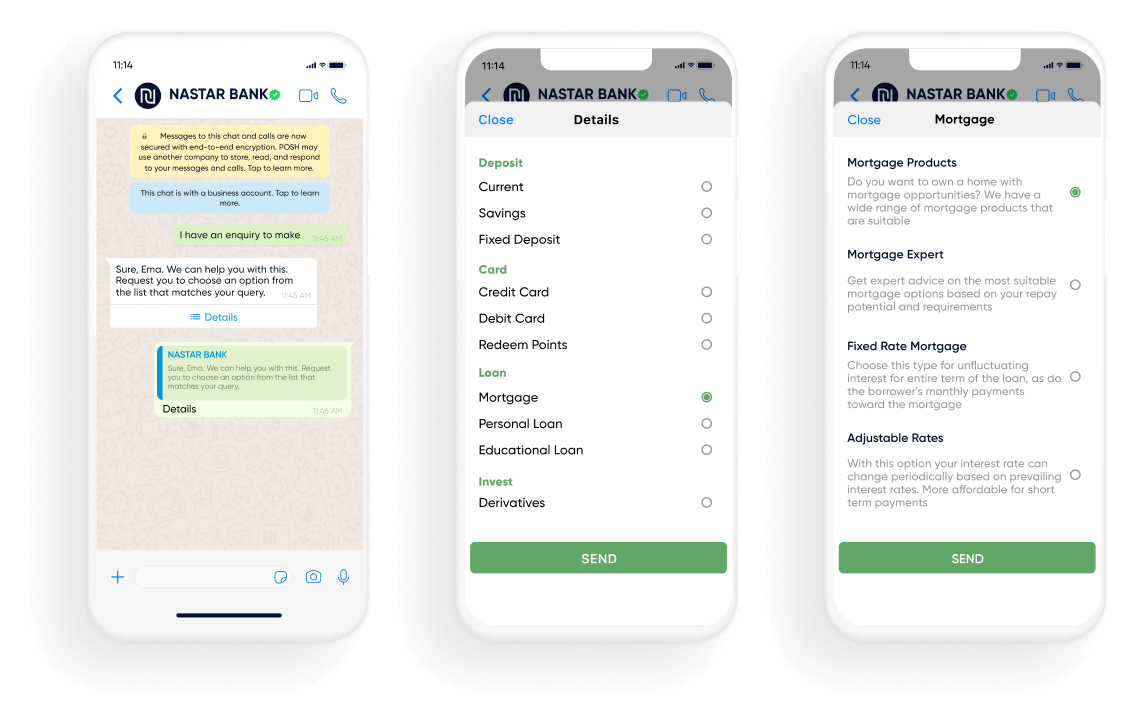
Tips for a successful implementation of conversational messaging
From setting objectives to ensuring correct segmentation, here’s everything you need to consider to get started with conversational messaging.
Set your objectives for conversational messaging
Defining clear objectives is essential. Are you looking to enhance customer engagement, drive sales, or improve overall satisfaction? Understanding your goals will guide your messaging strategy and help measure its effectiveness.
Identify target customer segments
To engage with your audience through conversational messaging effectively, it’s imperative to identify and understand them. Use data analytics tools, such as those offered by Insider, to gain insights into your audience’s demographics, behaviors, and preferences.
Understand the communication preferences your customers love
Once you’ve identified your target segments, use a CDP (like Insider) to dive deeper into their communication preferences. Do they prefer receiving messages via email, SMS, or messaging apps like WhatsApp? Understanding how your audience prefers to communicate will enable you to tailor your messaging strategy accordingly.
Choosing the right platforms and tools for conversational messaging
Selecting the right platform for your conversational messaging strategy is crucial in ensuring success.
There are 5 key considerations for marketers to consider when deciding on a conversational messaging platform.
- Evaluate platform features and capabilities
Assess the features and capabilities offered by different messaging platforms. Consider factors such as automation tools, chatbot integration, and personalization options. AI-driven platforms offer a wide range of features for WhatsApp conversational messaging, including advanced automation tools and personalized messaging capabilities, to help streamline your communication efforts.
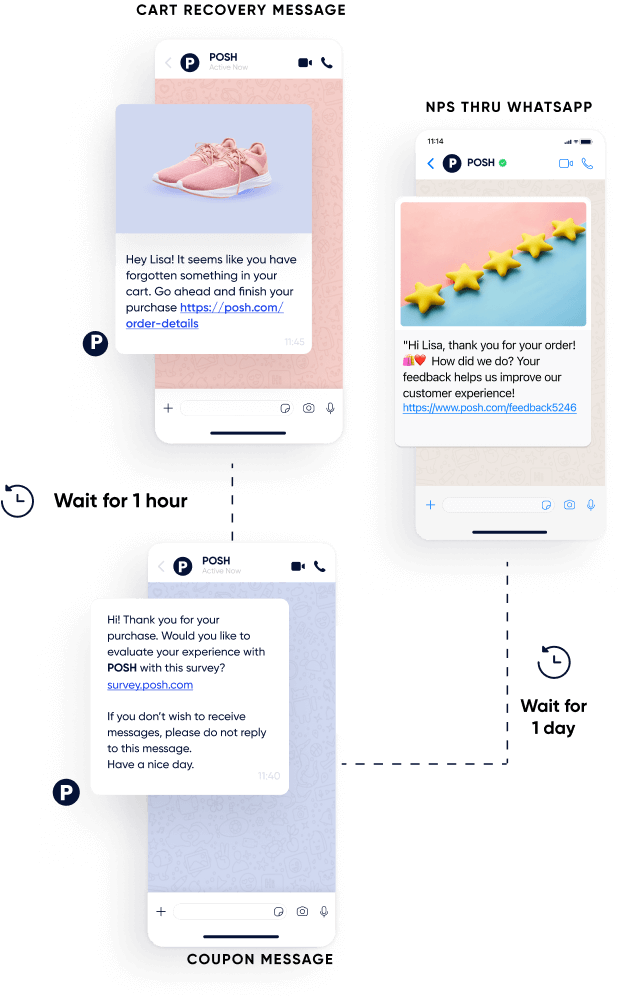
2. Seamless integration with existing systems
Look for a platform that seamlessly integrates with your existing marketing systems and workflows. This ensures a smooth transition and efficient management of your messaging campaigns aligned with your customer data. You should expect seamless integration options, allowing you to effortlessly sync your WhatsApp conversational messaging efforts with your overall marketing strategy.
3. Scalability and flexibility
Choose a platform that can scale your business and adapt to evolving needs. Whether you’re a small startup or a multinational corporation, scalability and flexibility are key considerations. Conversational messaging platforms allow you to accommodate businesses of all sizes, offering customizable solutions tailored to your specific requirements.
4. Analytics and reporting capabilities
Opt for a platform that provides robust analytics and reporting capabilities to measure the effectiveness of your messaging campaigns. AI-driven platforms offer comprehensive data analytics tools, allowing you to track key metrics and gain actionable insights into your conversational messaging performance.
5. Shoppable capabilities with conversational messaging
83% of consumers use messaging apps to contact a business to learn about its products and services. And 75% of them have already made a purchase after using a messaging app. So, why wouldn’t you want to offer the shoppable feature on WhatsApp?
Shoppable capabilities in conversational messaging tools help to provide a more seamless experience. You can send messages on WhatsApp about new arrivals, personalized product recommendations, or discounted products. Customers can browse and purchase products seamlessly within the chat interface, enhancing the shopping experience and driving sales.
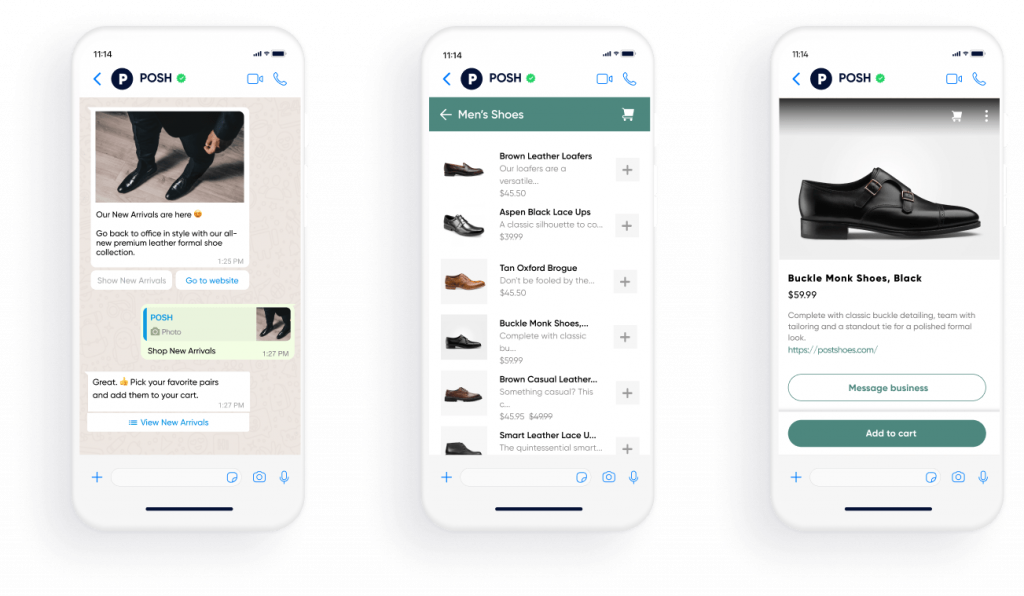
Tips for developing a conversational messaging strategy
Crafting a robust conversational messaging strategy is essential for marketers looking to align their brand messaging across various channels while enhancing customer experience and driving loyalty and lifetime value.
Next, we discuss developing a conversational strategy that resonates with your brand and audience.
Define your brand voice and tone
The first step should be defining your brand’s voice and tone for conversational messaging. Remember that your brand personality should align with your target audience and industry norms. Whether your brand voice is friendly and casual or professional and formal, consistency in messaging is key to building trust and rapport with your audience.
Ensure you provide a seamless omnichannel experience
Ensure your conversational messaging strategy provides a seamless experience across all channels. Whether customers interact with your brand via email, SMS, social media, or messaging apps like WhatsApp, maintain consistency in messaging and branding. You can use tools to help you create automated message channels. Take Linked Helper. Its AI helps to set up smart message funnels with your prospects and existing customers to nurture relationships, streamline communication, and enhance engagement. This omnichannel approach is possible with clearly defined customer journey orchestration, which helps reinforce brand identity and deliver a cohesive customer experience.
Focus on building customer loyalty
A recent study revealed that 63% of consumers expect brands to offer customer service through social media channels. Social media platforms are powerful tools for inspiring customer engagement and building loyalty; you don’t want to miss out on that opportunity.
To build loyalty, you can engage customers with relevant content and personalized recommendations and offer timely support. You can strengthen customer relationships by demonstrating genuine care and attentiveness.
Use segmentation to increase customer lifetime value
Customer lifetime value is the total value a customer generates throughout their relationship with a business and is substantially higher for loyal customers than new ones.
Reach out to your customers consistently, drive repeat purchases, and create more upsell and cross-sell opportunities. AI-driven conversational messaging platforms offer advanced automation tools and predictive analytics capabilities to identify opportunities for personalized offers and recommendations, maximizing customer lifetime value.
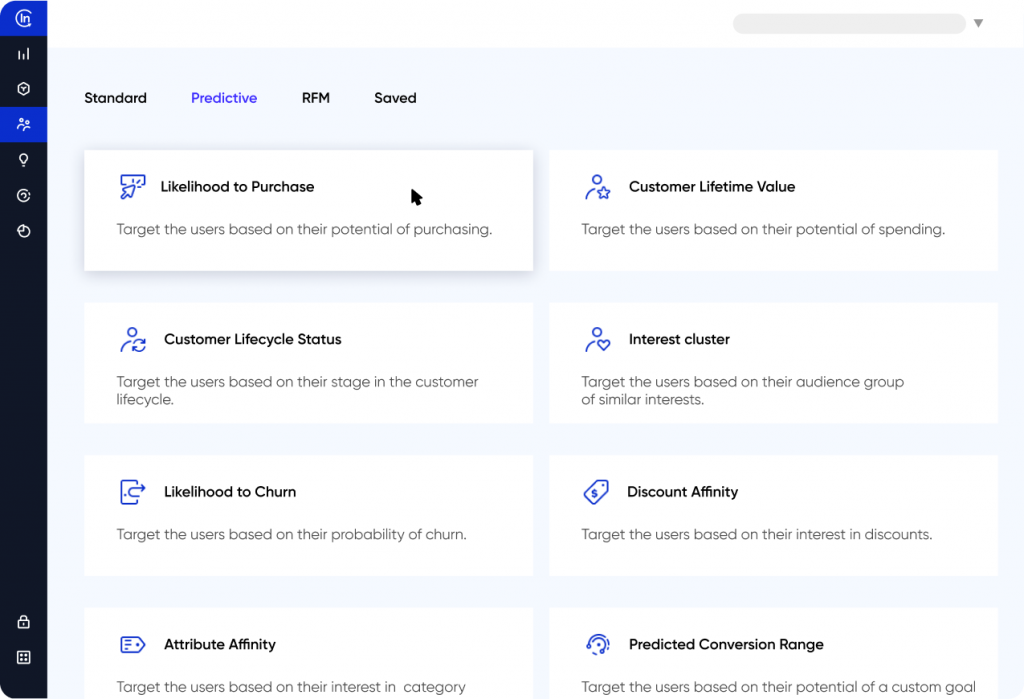
How to implement conversational commerce for the best results
Here are three key points for marketers to consider to ensure successful implementation.
- Start small and test to validate the best performance
Instead of diving headfirst into a full-scale implementation, start with a small project to test customer reactions. Choose a specific audience segment or marketing campaign to target with conversational messaging.
By starting small, you can assess the approach’s effectiveness, identify challenges and issues, and make necessary adjustments before scaling up.
- Provide clear customer support
79% of consumers opt for live chat as their go-to solution for quick communication. By providing clear customer support to your customers, you can help their needs faster and improve their experience.
Clear customer support means you ensure customers can access assistance and guidance throughout their interactions with your brand. This may involve integrating chatbots or live chat features to address common inquiries and provide real-time assistance. By offering reliable support, you can enhance the customer experience.
- Always analyze and iterate
Continuously monitor and analyze the performance of your conversational commerce initiatives. Track key metrics such as engagement rates, conversion rates, and customer satisfaction scores to evaluate the effectiveness of your strategy. Use these insights to iterate and refine your approach over time, making adjustments based on customer feedback and evolving market trends.
By adopting a data-driven approach, you can optimize your conversational commerce strategy to drive better results and achieve your business objectives.
⭐️⭐️⭐️⭐️⭐️
“ Reaching customers and delighting them where they are with Insider. Our main aim was to target our messaging-first audience with channels like SMS and WhatsApp. Insider was the best in the market not just for their world-class product but also for the fact that they have a knowledge base and expert support that can help you attain your goals much faster than your competitors.”
– Director of eCommerce at a leading retail brand, read the full review on G2.
Discover Insider’s WhatsApp Commerce today
WhatsApp Commerce is the latest update from Meta, now powered by Insider. It enables businesses to create end-to-end purchasing experiences on WhatsApp, enabling users to discover, browse, purchase, and even make payments within the app.
WhatsApp conversational commerce merges the capabilities of conversational commerce with instant messaging, providing conversational buying experiences directly within the world’s largest messaging application.
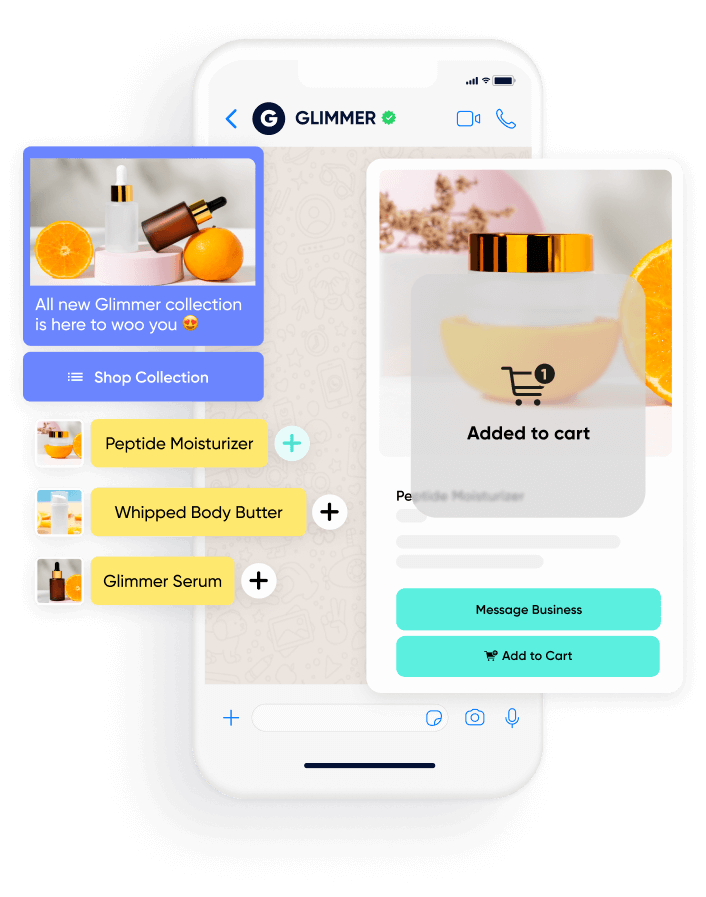
Insider’s industry-leading data aggregation capabilities and advanced personalization and automation tools for 12+ channels help you maximize every interaction with your customers.
To get started, book a demo, explore our platform, or contact us; We’ll be happy to answer any questions you may have.
FAQ
A conversational message is similar to natural human conversation, often characterized by a casual tone, interactive style, and personalized content to engage the recipient in a dialogue.
Conversational communication refers to communication through messages or information that resembles everyday conversation, emphasizing back-and-forth interaction, active listening, and empathy to build participant rapport and understanding.
An example of conversational communication could be a customer service chat where a representative engages with a customer in a friendly and responsive manner to address their inquiries or concerns.
WhatsApp conversational marketing uses the WhatsApp platform to engage with customers in real-time, providing personalized recommendations, assistance, and support to drive sales and enhance customer satisfaction.
Yes, a business message should often be conversational, especially in customer-facing interactions, as it can help humanize the brand, foster stronger connections with customers, and improve overall engagement and satisfaction levels.



















